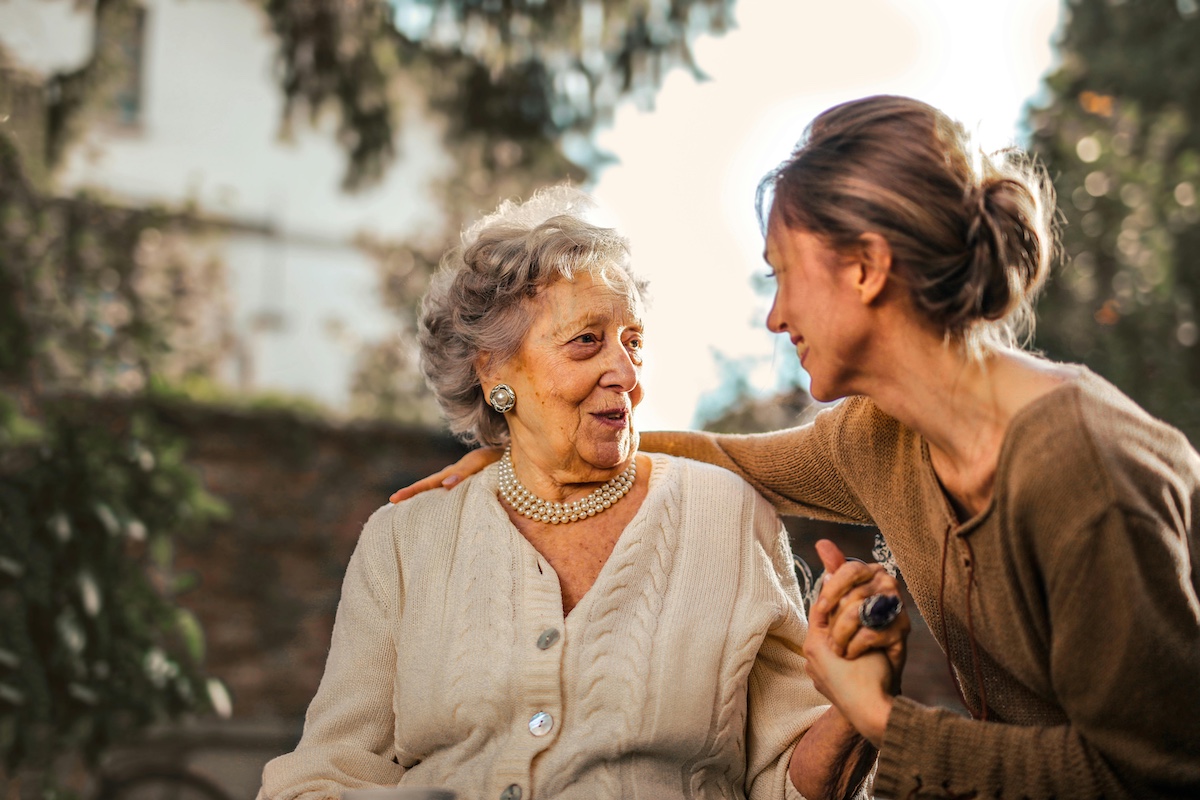Grief After The Fatal Toll Of Mesothelioma
Written by Dr. T. David Willets (GC-C)
Jessica and Michael finally made it! Empty nesters. After years of raising three kids, the big day came. Their youngest moved away to college. It was a bitter-sweet moment as she backed out of the driveway, into the street and around the corner. Yes, they actually stood in the street watching as their baby flew the nest into a world of unknown challenges.
But now, no more soccer games an hour and a half away on a Saturday. Leaving at 6:30 am. On a Saturday! Gone are the days of teenage drama, broken hearts, broken arms, laughter, family fun night, warm hugs. Life marches on. You may know this drill. An era ends and a new one begins. Bitter-sweet.
A few months pass. Jessica shuffles into the den after dusting the furniture in the children’s abandoned rooms. Mike reclines on his Barcalounger throne. Jessica has had it. In a measured, deliberate tone she proclaims, “We don’t need this big house anymore.” The seed was planted. Over the next few months, the seed was watered. And it grew. And it grew. Then it came to full bloom.
Michael and Jessica lived in a suburb. The same builder constructed most of the houses in this subdivision. So, there were four basic models from which to choose. No unique personality could be found here. Jessica and Mike were a bit weary of living out the song, “Another Pleasant Valley Sunday,” by the Monkeys. It just didn’t work for them any longer.
They did know a section of town where both of them had said many times, “I’d like to live there.” And that’s what they did. Escaping the burbs and into the groovy district. You know the area. Cute cottage houses built in the twenties. Real character. No stamped-out abodes found here. Clinker brick, steep roofs, arches, leaded glass windows, small stained- glass window inserted into the front doors, gas-fueled lamp posts in the front yards. And that’s just the outside.
However, the interior desperately needed renovation. I mean some structural renovation. In the 1920s the “open floor plan” concept was not in vogue. Though charm permeated from the rich oak floors to the magnificent crown molding, the place required some real “Trabajo”. It was decorated in a Spanish theme by the previous owners.
Some things are best left to the pros. But in the day and age of house fixer-upper-and-flip television shows, it was just too tempting for Michael to try his hand, at least for the initial demolition phase. So, with sledgehammer and crowbar deployed Michael went Chip Gaines on the walls of this old house. Not knowing the danger of what faced him, the fate of his life was about to be exposed.
Until it was banned for use in home construction in 1977 asbestos was used in roofing, insulation, coatings, flooring and ceiling tiles. Along with age, when asbestos is disturbed the material breaks into small fibers that are easily inhaled and/or digested. This condition of asbestos is called friable.
Though rare, asbestos can cause mesothelioma. This is a form of cancer most often occurs in the thin membrane lining of the lungs, chest, abdomen, and (rarely) heart. “Rare” is a highly relative term. It is not rare if you or someone you love contracts the disease. If you or someone you love is being treated for or has died from mesothelioma, this condition has taken center stage in your life.
Small amounts of asbestos can bring on mesothelioma. Michael found this out. The charming house he and Jessica bought was filled with it. His goal to save money collided with his ignorance of this dangerous material. Michael became a victim of mesothelioma. Jessica now begins a journey that is riddled with emotional pain. Over and over she laments, “What do I do now that Mike is dead?” She faces grief.
I believe there are four stages of grief; trauma, disorientation, adjustment, and rebuilding. The emotions of denial, anger, bargaining, depression, and acceptance are all part of these four stages. Every person grieves differently. The time frame for a healthy grieving process differs, too. Facing the pain of grief and talking it through with a trusted friend or counselor is the necessary journey to find peace and happiness again.
The first stage of grief is trauma. In the trauma stage your mind, body, and spirit have all been jolted at once. If you had an LED panel on your forehead a flashing message would read, “System-Wide Error!” Many hospitals in the country have as part of their campus what they call a “trauma center.” A trauma center is designed and staffed to provide care for patients suffering from major traumatic injuries such as falls, motor vehicle collisions, or gunshot wounds. If you are in a trauma center your injury has traumatized most every part of your body, to some extent.
It is not unusual after the death of a significant other to experience many physical symptoms; insomnia, digestive issues, aches, and pains, (e.g. headaches, backache, neck pain, rib and chest pain) anxiety attacks, difficulty breathing, loss of appetite and comfort eating. It will be hard to focus your mind on any one thing for very long. Remember, trauma is a system-wide event. Our emotions deeply influence our physical well-being.
Here’s my counsel; go ahead and collapse. Meltdown. Depending on your personality you will express these actions differently from other people. This is the key; you don’t have to “be strong” for anyone as you process the death of someone significant to you. Don’t run from or “swallow” the pain. Face the pain, as unpleasant as it might be. This is a necessary element of healthy grief.
The second stage of grief is disorientation. Someone significant to you died, and everything in your emotional world starts spinning. Someone on whom you could focus your emotional eyes, one of your markers, is gone. The G-force of change is making people and places once familiar to you, unfamiliar.
Let me quickly say that this disorientation is not the medically serious type associated with Alzheimer’s disease or a stroke or the potentially negative side effects of medication. No, this disorientation is when your emotions and your mind try to make sense of reality after the death of a loved one. Your emotions have not yet caught up with the realities your mind observes. There is a conflict between the two. Things you used to enjoy or take for granted suddenly become confusing because a major element of those things is gone. It is missing, your marker, namely your loved one, is gone.
There is a reason why we say things like, “He was my pillar” or “She was a rock for me” or “It feels like my world is falling apart.” These by-lines describing emotional disorientation. While it doesn’t feel normal, disorientation is a normal part of the grieving process. We, humans, are creatures of habit and routine. When someone significant to us is no longer on the landscape of our lives, it takes a while to reorient. Our established associations, both good and bad, play important roles in our constructed “stability” in our lives.
It’s here in the disorientation stage when many people experience emotions they’ve never felt before. Emotions such as paralyzing fear, insecurity, a sense of being lost, abandonment, aimlessness, self-doubt, and even numbness. Added to the discomfort of these unfamiliar emotions are the noticeable concerns family and friends now see in you. “I’ve never seen dad act this way,” a daughter says. A friend exclaims, “He always has had a keen sense of purpose. Now, he seems out of focus.”
When a close loved one dies it’s like someone cut away a huge part of you. In fact, emotional disorientation can play out similarly to losing an arm or leg. In the first few days following surgery amputees experience “phantom pain” in the limb that is no longer there. The physical reality has not yet coordinated with the section of the brain that receives signals from that part of the body: disorientation.
The third stage of grief is adjustment. One of the deepest groans of the soul after the death of someone significant is that of wishing for “yesterday.” Your life before his/her death is now frozen in time. That life doesn’t change, while your new life changes rapidly. No wonder social scientist who study such things say the average person’s brain is focused 60% of the time on the past. If that’s so, let’s focus for a little bit on the remaining 40%.
Life changes. In fact, we hear, “The only thing certain in life is change.” You have a choice after someone you deeply loved dies. Some people bury their emotional heads in the sand and live out their days as if nothing has really changed. Like Norma Desmond in the classic 1950 movie Sunset Boulevard, they are stuck in a fantasy called yesteryear.
Norma was a goddess of the silent movies before “talkies” landed a fatal blow to that outdated technology. She failed to embrace the change. Building an imaginary world where producers and directors lined up to offer her fabulous contracts in the next big silent movie, Norma was a pathetic caricature of her former self. Some follow Norma. I hope you won’t. That mindset can lead to complicated grief.
The healthier choice placed before you are to be proactive in building your new life. If you don’t strategically construct your life to look like youwant it to be, others may hop in and build your life, as theywant you to live it. I’ve seen it happen over and over. Given enough time the person who falls into that trap becomes angry and resentful. I don’t know anyone who purposefully set out to have a miserable life after the death of a loved one. But I’ve witnessed people, as well-intentioned as they might be, steer a griever in a direction he/she really did not want to go.
Adjusting to your new life takes an investment of time, energy and emotion. I encourage you to restructure your life with strategic purpose. Yes, it will be painful at times. All things that are worthwhile in life typically are difficult to some degree. Give yourself permission to step outside the boxes of your former life. It is agonizing enough to have a loved one die. Please don’t let your life die, too.
It will be well worth your time to watch a 2007 movie starring Jack Nicholson and Morgan Freeman, The Bucket List. The movie follows two men who escape from a cancer ward to start a road trip with a wish list of to-dos before they “kick the bucket.” It’s a good flick on several levels. But for our purpose, I want to suggest a “bucket list” of 10 practical things you might consider to help you adjust to your new normal. Not all may apply to you. Make your own list.
1. Change the curtains in your living room.
2. Start a couple of new routines, like a daily walk or a weekly “girls or guys night out.”
3. Volunteer.
4. Get a pet or add a pet.
5. Take your wedding ring off (not for everybody, but it can be a liberating new start for some).
6. Start a new hobby.
7. Ladies, say “yes” to the guy who’s been asking you for a date.
Guys, ask that lady for a date (again, certainly not for everybody).
8. Join or start a support group.
9. Go to a place you’ve always wanted to visit, but never have.
10. Establish a new tradition.
You may not be able to do so now, but there will come a day when you will be able to write a list of positive things you would like to do. In fact, in some areas where you have felt restricted in the past, you will find freedom, now. What’s the saying; “Behind every cloud there’s a silver lining.”
The fourth stage of grief is rebuilding. What is “normal” in a new normal? The word normal is defined as “conforming to a standard; usual, typical, or expected.” Here is the critical focus in beginning your new normal; YOU decide what standard to which you want to conform. YOU define what is usual, typical, or expected. I promise you, from personal experience, that not everyone will like what you want in your new normal. But, please, don’t let someone or a group of someones dictate to you what they think “normal” should be for you after the death of your loved one.
I have a friend who pastored a large, conservative church in the south. After his wife died, he met a beautiful, energetic woman in the same town. They, over time, established a meaningful relationship and made plans to marry. Sounds good so far? Who wouldn’t want this blessing to fall on their pastor after such a devastating loss? What made this new relationship even better was the fact that everyone in the church and community loved her.
But there was an issue for some congregants in this biblically conservative church; she was divorced. My friend saw no biblical problem with this fact. Everyone in his family loved his new friend and thanked God for bringing her into his life. Some folks in the church, however, simply would not embrace the thought of their pastor marrying a divorcee. While it is anyone’s prerogative to believe as they choose, just be prepared that some of your family and friends may not approve of or like the choices of what you declare as “normal” for you at this stage in your life.
Press on. Believe in yourself. Trust yourself. Listen to the counsel of people who love you and want the very best for you. Your new normal can be a fresh start. Like one of the revelers on New Year’s Day, let me be the first to say on the eve of your new normal, “Happy New You!”
Portions of this article are from a book by Dr. Willets, Grieve Well – Live Well (Instant Publisher, 2018). This article is copyright protected and can only be used and duplicated with the permission of Dr. Willets.
If you like more information about the journey of grief and Dr. Willets, visit www.silverlining.ws.




